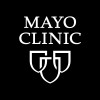
Abdominal Plane Blocks (APB) in Chronic Abdominal Pain (CAP)
Abdominal PainAbdominal Myofascial Pain Syndrome (AMPS)1 moreBackground: Chronic Abdominal Pain (CAP) is the sixth most common cause of hospital admission from any cause in women and the tenth most common cause in men. In the UK, it has been estimated that chronic abdominal pain costs the economy in excess of £100 million per annum. The mechanism of CAP is poorly understood. Patients with acute exacerbation of their CAP have multiple hospital admissions, prolonged length of stay and utilise significant health care resources. These patients have undergone multiple investigations with negative results leading to frustration for both the patient and the clinician. Additional testing and investigations increases costs, patient morbidity and comes with added risks. Patients are discharged once the flare up settles. The investigators have shown that treating patients with steroid injection followed by pulsed radio frequency treatment six months later can reduce the length of stay, repeat hospital admission, improve mood and provide durable pain relief in patients with CAP. The steroid is injected into a specific plane in the abdominal wall and is called abdominal plane block (APB). The investigators currently offer ABP treatment as a standard treatment in the management of patients with CAP. Aim of the study is to evaluate the effectiveness of Abdominal Plane Block (APB) treatment in reducing hospital readmission over 12 months in patients admitted with exacerbation of CAP Methods: The proposed study is a prospective, observational pilot study that will be conducted at Leicester General Hospital over 36 months. After providing written consent, adult patients admitted to the hospital with acute exacerbation of CAP will receive two sequential APB treatments (steroid injection followed by pulsed radio frequency treatment) six month apart. If the first treatment with steroid does not provide any benefit, the participants will receive a rescue treatment (trigger point injection with steroids). Participants will be asked to complete questionnaires on pain scores, mood and quality of life. Length of hospital stay, number of hospital re-admission following APB treatment as well as any complication from the APB treatment will be recorded. Participation in the study will end at 12 months following the first APB treatment on completion of relevant questionnaires.

Fibromyalgia in Patient With Impaired Fasting Glucose
FibromyalgiaTo assess the frequency of fibromyalgia among women with impaired fasting glucose.

Efficacy of Extremely Low Magnetic Field (ELF) in Fibromyalgic Patients
FibromyalgiaThis is a randomized double-blind crossover study. The investigators applied ELF with a device named "LIMFA Therapy®" to 48 fibromyalgic patients, assigned in two groups (true-sham and sham-true). Fibromyalgia severity was assessed with the Fibromyalgia Impact Questionnaire (FIQ), quality of sleep with the Pittsburgh Sleep Quality Index (PSQI) questionnaire and global quality of life with Short Form-12 of Physical and Mental Health Summary (SF-12) questionnaire.

Effects of the COVID-19 Pandemic on Fibromyalgia Patients
FibromyalgiaChronic Low-back PainIn this study, the effects of the symptoms related to the diseases of patients with fibromyalgia during the COVID-19 pandemic, their limitations in their social and business life, the need for different drugs, stress levels and the effect of the pandemic on the disease activity will be evaluated.

Acute Effects of Exercise in Women With Fibromyalgia (FM)
FibromyalgiaThe investigators previous studies of aerobic exercise in women with fibromyalgia (FM) have shown that exercise improves body functions and/or symptom severity in most patients, but not in all. About a third of patients with FM have been shown to have low levels of IGF-1. The purpose of this project is to study individual and biological factors that interact with outcomes of short-term (acute) exercise in FM. Method. A controlled prospective exercise study. Thirty women with FM and 30 healthy age-matched women, aged 20-50 years, will be recruited to the study. Two 15-minute ergometer bicycle exercise tests will be conducted in feasting patients, separated by one month. The first exercise test is at a low and the second at a high intensity. Measurements comprise blood test, pain rating and pain threshold, conducted before and after the test. The levels of IGF-1, IL-6 and IL-8 will be measured, and the changes in them will be related to health status and pain.

Pain Quality Study
Low Back PainHeadache1 moreOne way to better understand how various treatments for pain differ is to determine the effects of these treatments on different pain qualities or characteristics. For example, pain can be described as "hot", "electrical", "cold", "achy", and "piercing." In order to determine which pain quality/qualities that a pain treatment affects, researchers must develop measures of these pain qualities or characteristics. The purpose of this study is to learn more about the different pain qualities individuals who have low back pain, headaches and fibromyalgia experience. Identifying the common qualities of pain experienced by these groups will help researchers evaluate and develop more comprehensive pain quality measures, which will ultimately help them to be able to test the effectiveness of treatments for these different pain qualities.

GW679769 In Fibromyalgia
Depressive DisorderDepression1 moreThe purpose of the study is to investigate safety, tolerability and efficacy of oral GW679769 up to 120 mg dose compared to placebo in patients with ACR(American College of Rheumatology)-defined fibromyalgia, co-morbid with depression.

Laughter Frequency and Fibromyalgia Symptoms
FibromyalgiaThe purpose of this study is to investigate whether daily laughter frequency is associated with pain intensity and emotional state ratings in individuals who have fibromyalgia syndrome.

Impact of Inclusion of a Therapy Dog Visit as Part of the Fibromyalgia Treatment Program
FibromyalgiaIn this study the investigators hypothesize that the presence of a Mayo Clinic certified therapy dog will provide additional benefits above typical therapy for patients suffering from fibromyalgia currently enrolled in the Mayo Clinic Fibromyalgia Program.

PREDICT-SpA - French Epidemiological Study of the Evaluation of the Impact of Fibromyalgia in the...
Axial SpondyloarthritisFibromyalgiaThis is a prospective observational national (France) study with 2 visits 3 months apart (baseline and 12 weeks after TNF alpha blockers initiation). The objective of recruitment is 500 SpA patients (diagnosis according to their treating rheumatologist) initiating a TNF alpha blocker. The main objective of the study is to evaluate the impact of a concomitant fibromyalgia on the anti-TNF treatment effect in axial Spondyloarthritis in both anti-TNF naïve and pre-exposed patients.
